Horse Training: Using Long Lines

You need a few pieces of equipment to effectively use long lines in a successful manner.
- 2 – 30 foot lunge lines or long reins.
- Surcingle or bareback pad with stirrups; or english saddle with stirrups; or western saddle with stirrups.
- Saddle pad.
- Snaffle bridle with bit.
- Discarded english stirrup leatheror long belt or similar item for use as stirrup hobbles.
- Patience.
Our round pen is 50 feet in diameter, wooden boards with sandy gravel and dirt base. A corner of an indoor arena or paddock can be used effectively. However, I do recommend using some sort of barrier to prevent the horse from veering away. Otherwise you may end up running all over the place. In this lesson you want to continue to establish that you are in control. If your horse is dragging you around, then you are NOT in control and he knows it! The trainer in this set of pictures is Everette.
We always begin our training sessions on green youngsters by spending a bit using Monty Roberts’ techniques in the round pen. (Join Up(c) and Follow Up(c)) After we have worked the horse or pony in this manner we saddle up and spend a little more time working without lines, just taking a few turns each way in the round pen.
As you can see the long lines pass trough the stirrup irons and are clipped to the snaffle rings. You can do the same with a western saddle, just be sure that no matter what type of stirrups you have, you use the stirrup hobble to keep them close to the horse’s body. In this case we have used an extra english stirrup leather. It is passed through each iron and buckled under the horse’s barrel.
This is Bonnie’s first saddle, first bridle. We started her training just 40 minutes before this photo was taken, we have not worked her before. After the long line session I mounted Bonnie for the first time EVER! I was very brave!
Because you have spent time working the horse in the round pen, it pretty much know that you want it to go around against the rail. If you haven’t worked in the round pen before, then I recommend spending some time doing so.
The goal of this session is to get Bonnie to respond to the pressure of the bit in her mouth without pain, without fear, and to set the foundation for all other mounted training to follow. She must learn to stop, turn, and back before she will be ridden. We only ask for one step back, just to encourage her to give to the bit.
A very light touch in used, no pulling. Gentle taps on the reins are as much pressure as we need. When Bonnie responds with the requested task, we ease up pressure on the bit immediately as a reward. Gentle hands make a good, responsive horse. Please remember that. This is not a battle of wills, but a learning session for both you and your horse.
Bonnie was first walked around the arena with no pressure on the lines just to get her used to having them on her hocks. Mares may be touchy about this more so than males, take time with your horse. If she kicks at the lines don’t worry about it and don’t get excited. Just keep going and she will get used to it.
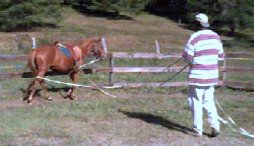
Here she is just walking in a relaxed manner with the lines on her hocks. Bonnie was not troubled by them at all. In this very first lesson she did buck when released after the saddle was cinched, but she only bucked a few times and it was over. She made no attempt to buck when I got on her. Everette has a line in each hand. It does take some practice to not get your feet tangled, so take care, we don’t want any injuries. You can take up the end of the lines in a coil in your hand. Everette just doesn’t happen to do it that way. He has started every one of our horses in this way.

Here Everette is getting Bonnie to take a turn to the left. You can see how the right rein is relaxed and the left one is showing tension. He is gently tapping on the left line, which in turn gently taps on the bars of her mouth. Bonnie left this lesson with NO abrasions in her mouth, on her gums or wearing on the corners of her mouth.

Here is Bonnie at the trot. I was happy to see the extension in her front leg as her future is in Dressage. Notice how the lines are loose, not pulling on her mouth. To stop, just give gentle tugs, tapping the lines in a see-saw motion and say whoa. It may take time to get the horse to stop, don’t worry, in these first lessons your horse is trying to figure out what you want. As soon as the horse stops, release the pressure. This is the reward.
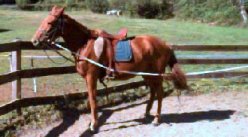
Here Bonnie is asked for a turn to the right. The right line is tapped, you can see the tension in is in the photo, while the left line is slack. Bonnie has yet to respond to the cue, but she does without a fight and has now turned both right and left. She has also stopped and backed. We ask for only one step back in the beginning. The long line training session lasts about 1/2 hour, her entire session is about 1 hour and 10 minutes. She is doing great, showing a real willingness to learn.
In our next session we will do the same thing, with less time in prep before hooking up the long lines. I will also stay mounted longer, and take a short ride around the round pen in both directions at the walk, possibly the trot. As each session gets better we will add more time in the saddle in the round pen and the indoor arena. By a month from starting we will be taking rides in the pasture without escort. Then the real training can begin.
Long line training helps your horse learn to give to the bit before you mount. This way you have much more control than if you just got on with no ground work. You should be able to ask for a stop, turns, and a step back on your first ride. Use the same tapping or light pull and release you use while working on the ground.
This training can also be used when teaching various Dressage Movements. You can also us long lines to re-train a spoiled horse. Using the same principles outlined here, begin at the beginning, establishing new lessons, trust and time spent together without riding. Some horses appreciate the ground work and learn to respond better to the bit than ever before.
The same type of lessons are used when preparing your horse or pony to drive. There are additional steps involved to teach them to pull, wear a harness, and not fear the shafts. Never just hook your horse or pony to a cart without thoroughly preparing by ground work. You could at the least ruin the horse, and at the worst serious injury or even death could occur – to you or your horse. Driving is an involved sport, it takes training and skill.


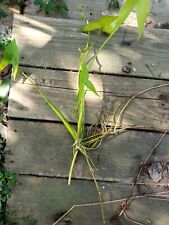
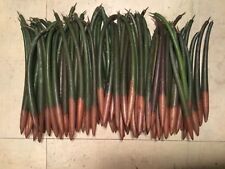

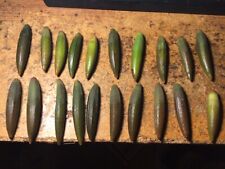


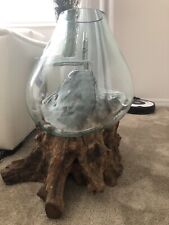

![100 Bulbs Red Tiger Lotus [Bulk Discount] | Aquarium Plants Factory® picture](/petstore/img/g/Ut4AAOSwCShlvx6l/s-l225/100-Bulbs-Red-Tiger-Lotus-Bulk-Discount-Aquarium-P.jpg)


